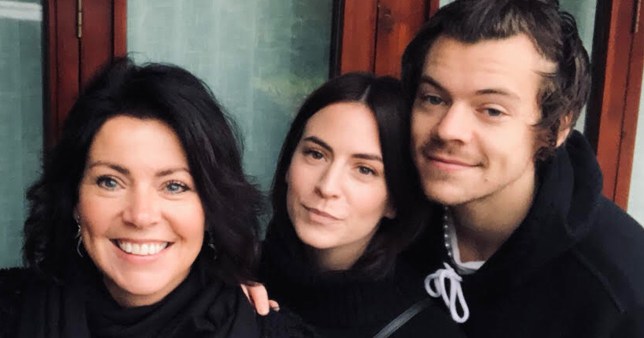
By Lilit Marcus, CNN
Hong Kong (CNN) — “You have pretty hair,” my colleague said. “Is it your natural color?”
“I…. don’t know?” I responded.
That wasn’t supposed to be a funny answer. It was the truth.
Three years ago, I went through treatment for cancer. The disease took many things from me — one breast, several lymph nodes and my hair.
Healing comes in fragments, and “better” is a relative term. But the easiest visual sign of a person’s recovery comes in the form of hair.
Every morning, I poked my head expectantly, like my dormant hairs were plants about to burst forth from the earth. When they finally arrived, the auburn I’d had my whole life was a dark chestnut brown. Formerly stick-straight, my hair was now wavy and flopped up at the ends.
This is a common experience for people who have undergone chemotherapy. While chemo kills off cancer cells, it also kills a lot of other cells, including hair follicles. I lost my eyebrows, body hair, and some eyelashes in addition to the hair on top of my head.
But chemo can also affect the shape of follicles. It’s a phenomenon so common that there’s a name for it used by patients who report their hair growing curly after treatment: “chemo curls.” Treatment affects everyone differently. Some people have darker or curlier hair at first, then find that their “old” texture and shade return over time. For me, though, this doesn’t seem to be the case.
Sometimes, I stare in the mirror not knowing who is looking back at me, or try to figure out why the lighting is so strange in the bathroom. I pull hairs out of my brush and wonder if a friend borrowed it without telling me.
My post-cancer body reminds me of the post-puberty one I’d had as a teenager, when my old clothes didn’t look right anymore. The “go-to” black cardigans and pink lipstick suddenly seemed all wrong.
Getting an expert opinion
As I struggled to figure out what to wear, someone suggested trying a “personal color analysis” session.
Already a huge trend in South Korea, the process of analyzing people’s natural color tones has surged in popularity in the past year thanks to TikTok. During the session, a stylist holds sheets of different colored cloths up against your face to see which look best on you. Analysts begin with groups of clothes organized by “warm” and “cool” tones, then carry out close-ups of specific single colors for more precision.
It may be fashionable now, but the practice has deep roots.
Like many women in the 1980s, Ruth Merrion was introduced to personal color theory by the artist Carole Jackson’s bestselling book “Color Me Beautiful.” In the book, Jackson classified women into one of four categories, based on seasons of the year. These categories became a rough rubric for deciphering which colors would be the most flattering for their clothing and makeup choices.
But for Merrion, the book didn’t do enough.
Australian-born Merrion had resettled in the UK but struggled to make friends. Later, after studying color theory, she realized that her mistake had been choosing clothes in shades that made her “look about 10 years older,” when she’d been trying to project herself as likeable and confident instead.
Later, she wrote her master’s thesis on personal color analysis at Australia’s Curtin University.
“I learned a hard lesson that (choosing clothing) is not really about being beautiful,” she said in a Zoom conversation. “It’s about good communication.”
As Merrion explains it, the colors we wear are about more than just what’s considered flattering. They’re a quick, visual way of telling the world who we are.
The connection between the colors around us and the way we feel has been used to influence everything from prisons (painted in pastel colors in the hope of calming incarcerated people) to food packaging (organic products in earth tones, designed to look more “natural”).
Vivian Seo trained in color analysis in her native South Korea and started her company, Find Your Colour, in Hong Kong, where we both live. I went to my session with her expecting some general advice about whether I should wear neutrals or pastels. What I got was a combination of makeover and therapy session, both of which I needed desperately.
Seo also starts with the four seasons, but then breaks each one down into four sub-categories: clear, soft, deep and light. Each of those 16 types then has a spectrum of colors that best suit specific people.
By that methodology, for example, a “soft winter” person should wear gray tones, while a “light summer” one will look good in bright pinks and purples.
Finding my color — and my voice
My personal color analysis session emphasized the personal.
Before pulling out the colored drape cloths, Seo asked about how I wanted to perceive myself and my personal style. I mentioned wanting to look professional and finding some go-to office basics, and wrote down prompt words: “classic,” “elegant,” “healthy.”
This is precisely what, Merrion would say, these color analysis sessions truly hinge on — I don’t just want to feel pretty again; I want to telegraph to the world that I’m no longer sick.
And it’s not just about hair, either. Seo made notes on my eye color, skin tone, facial structure, and more to craft her analysis.
Her diagnosis: I’m a “clear spring,” which means I look best in bright colors.
It was hard to imagine giving up black, the uniform of every New Yorker (having spent my professional career in the city before relocating to Asia, there’s a significant amount of black clothes in my wardrobe). But there was incontrovertible evidence in the form of seeing myself in the mirror with a turquoise or bright green drape versus a black one.
Growing up, I’d always avoided the color orange, as it clashed with my then-reddish hair. But seeing an orange-red lipstick on myself for the first time — and absolutely adoring it — was an unexpected reminder that getting used to something doesn’t mean it’s true forever.
Knowing it can be hard to shake people out of their routines, Seo was quick to mention that she’s just offering advice. She also noted that there’s no such thing as a “banned” color. I didn’t have to give up my favorite, yellow — but she suggested trying a more lemon-y shade instead of a buttery one.
I also don’t have to throw out all my black clothes just yet. (Not that I have the money to go buy a whole new wardrobe anyway.) Seo suggested black accessories, and noted that black pants and skirts are also “approved” — basically, if it’s not next to my face, it’s fair game.
After the session, Seo handed me a pre-printed card with my clear spring colors on it, so I could keep it in my wallet and use as a reference while shopping.
Later, she sent me a long, detailed PDF full of suggestions about what to wear — and not only colors. Seo included suggestions about patterns (small ones), jewelry (colorful gems) and earring shapes (swirls over geometric lines), as well as recommended cuts for jackets and blouses, complete with photos of models and celebrities whose outfits worked as examples.
A few weeks later, I bought a lemon-yellow dress that made me smile as soon as I saw myself in the dressing room mirror.
Although I’m no longer sick, I’ll never be the same person I was before my cancer diagnosis. I’m on medicine that I’ll likely take for the rest of my life. I have mismatched breasts and visible scars. I’m in therapy to cope with the feelings that developed during my treatment. The word “remission” is still something I only say in whispers, a superstition.
But maybe the next time I look in the mirror, I’ll recognize myself.
The-CNN-Wire
™ & © 2023 Cable News Network, Inc., a Warner Bros. Discovery Company. All rights reserved.






